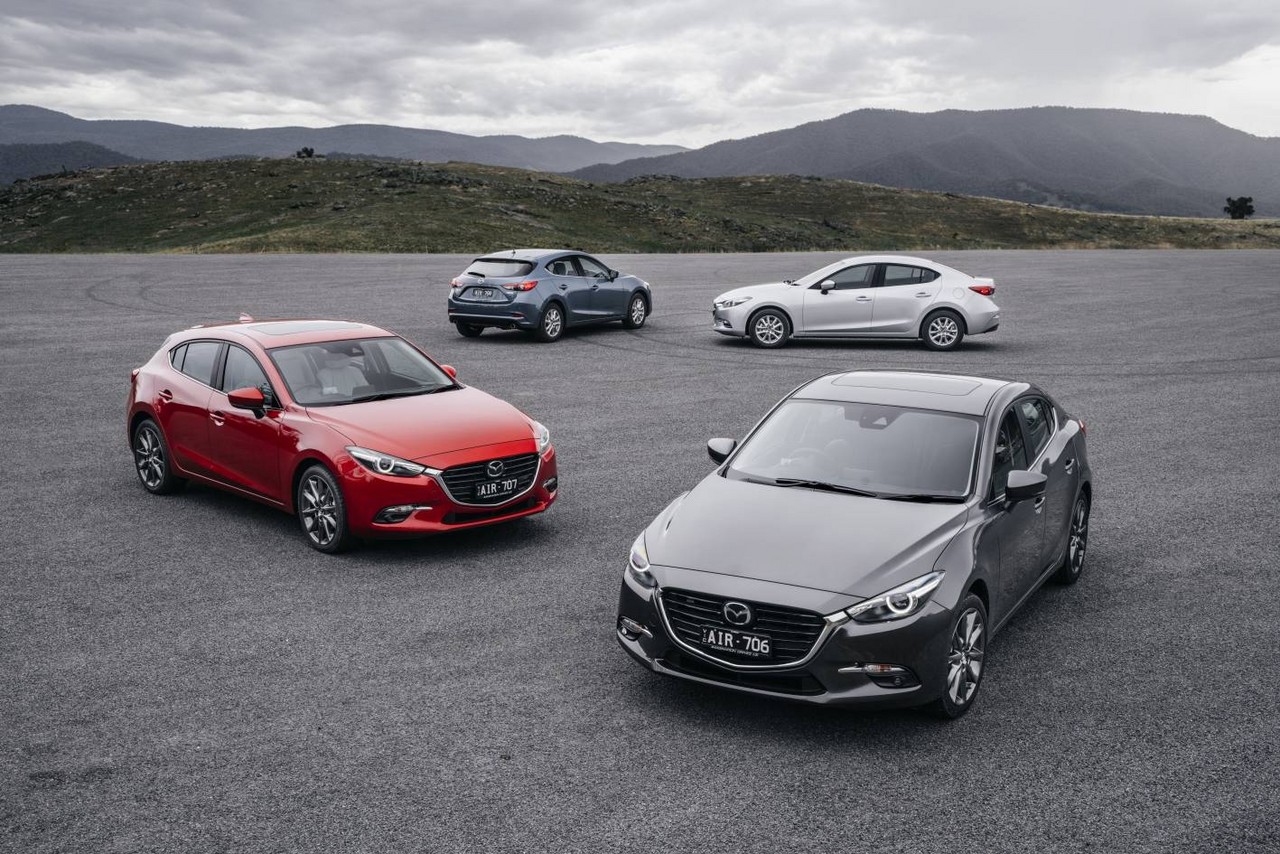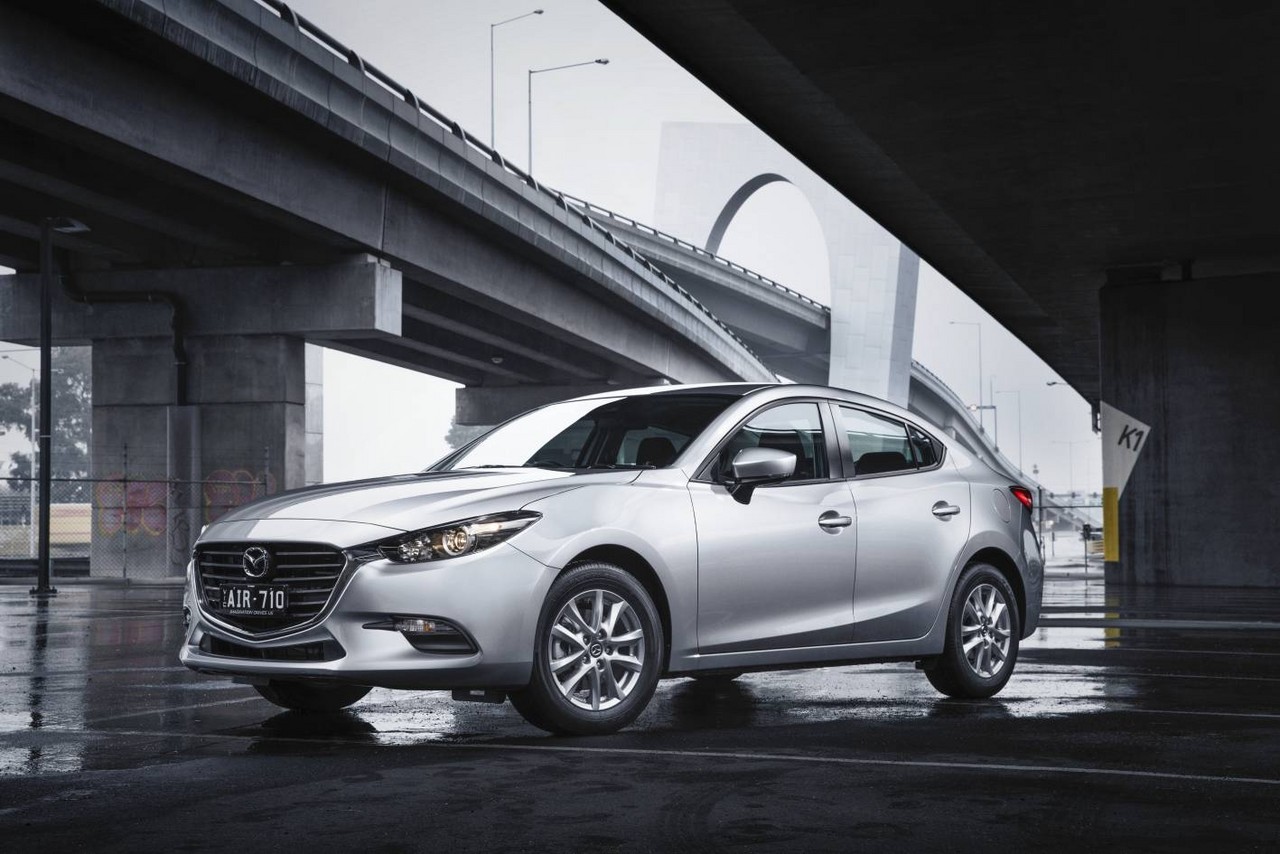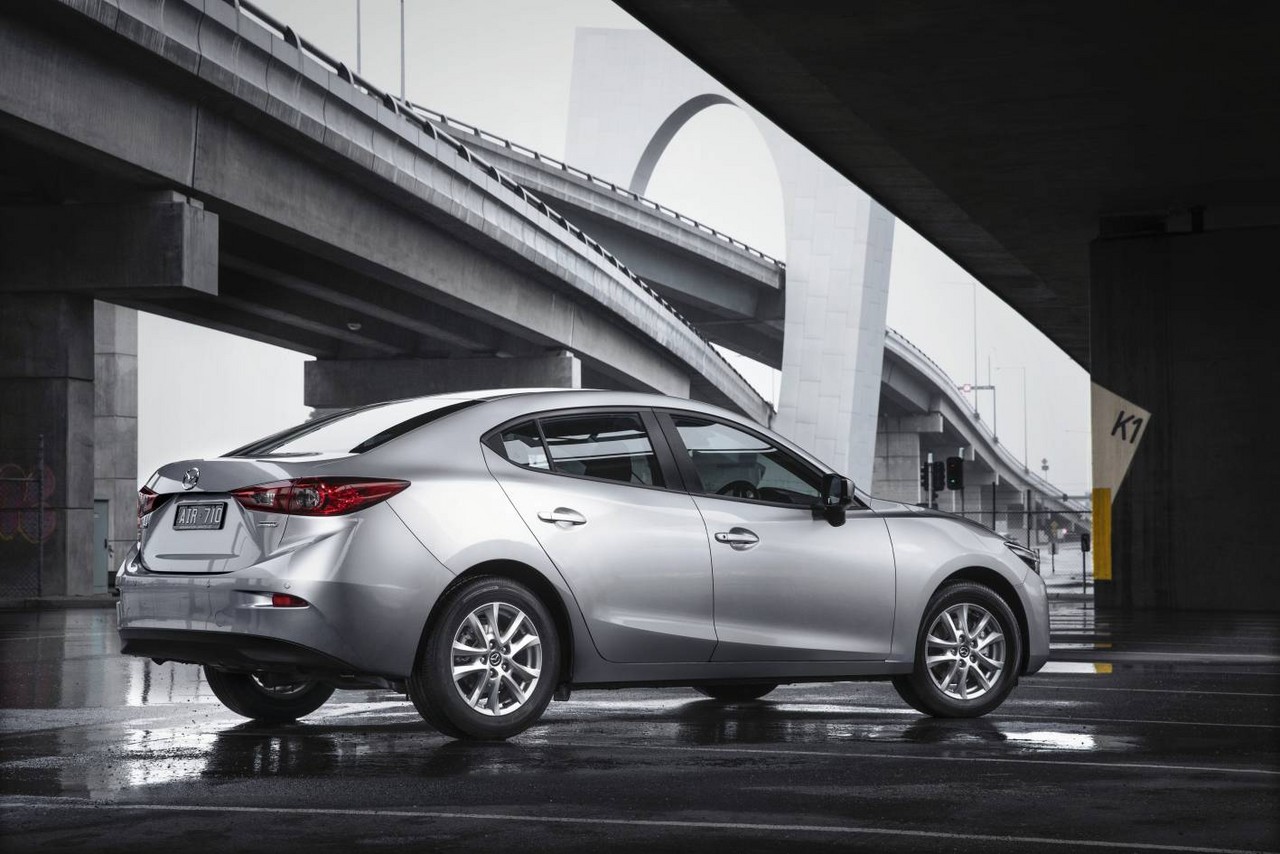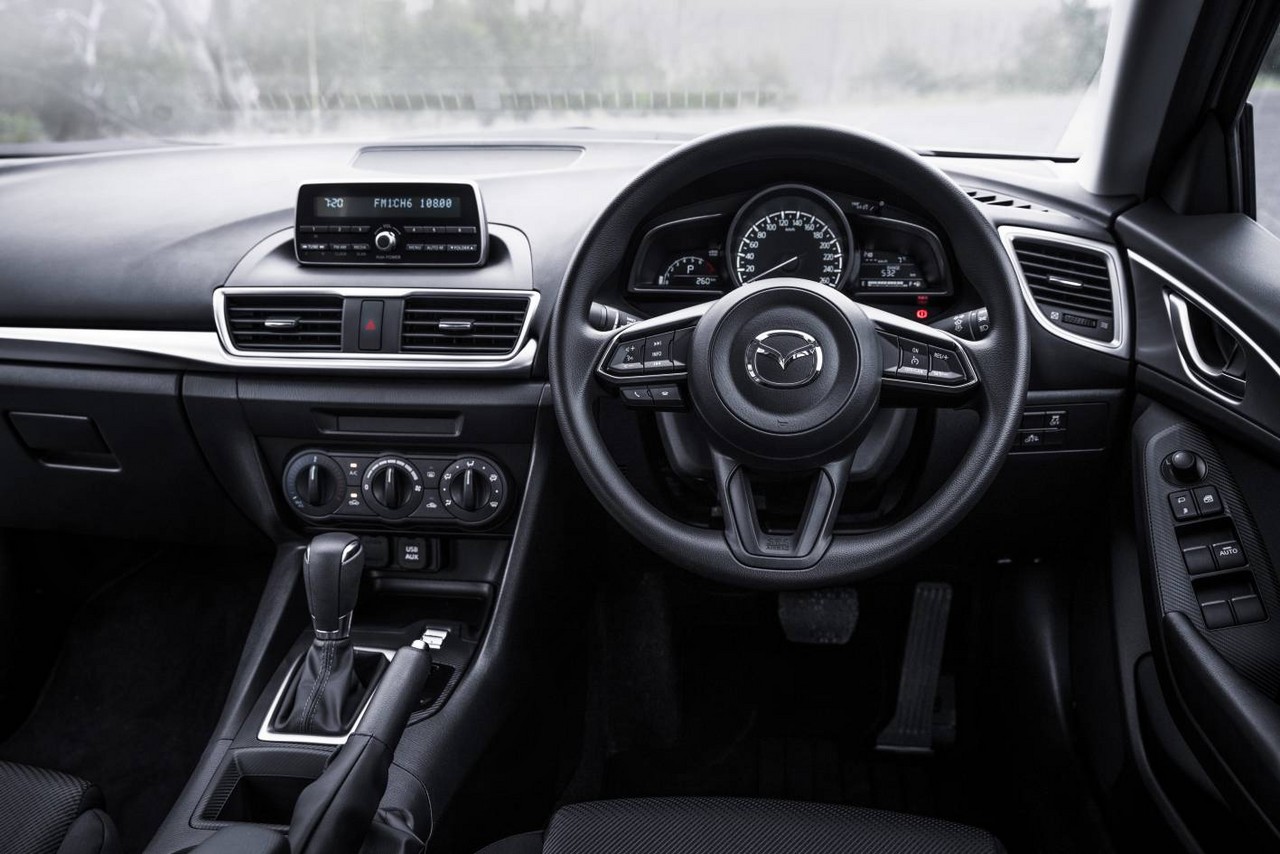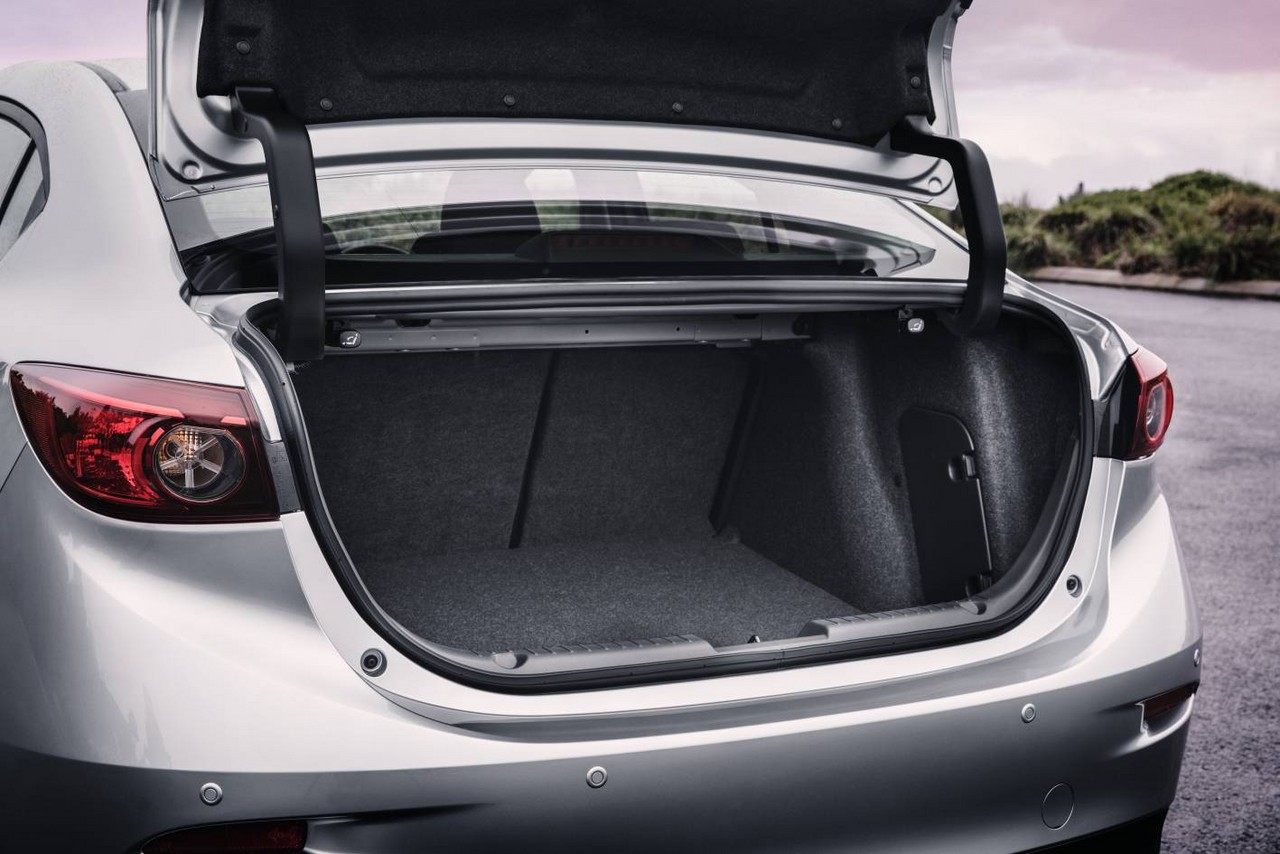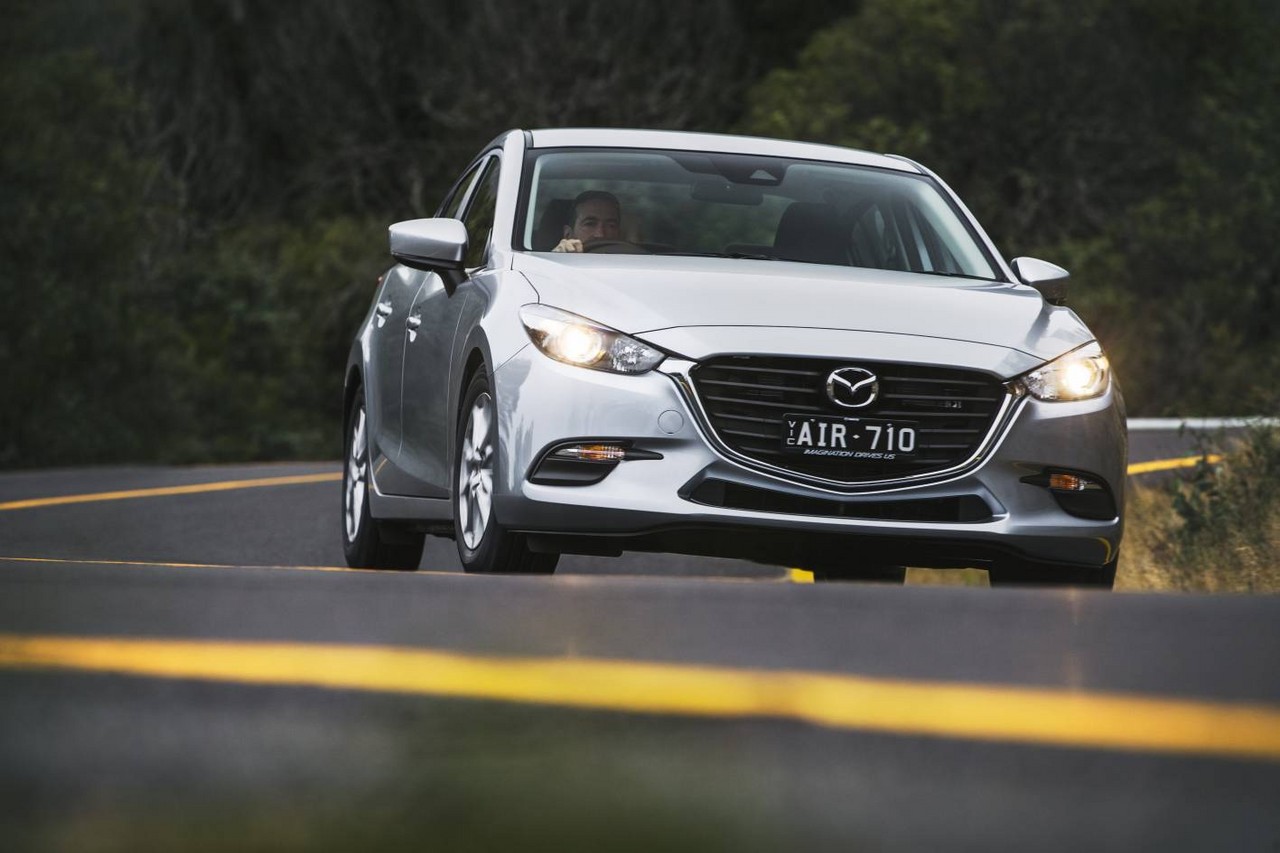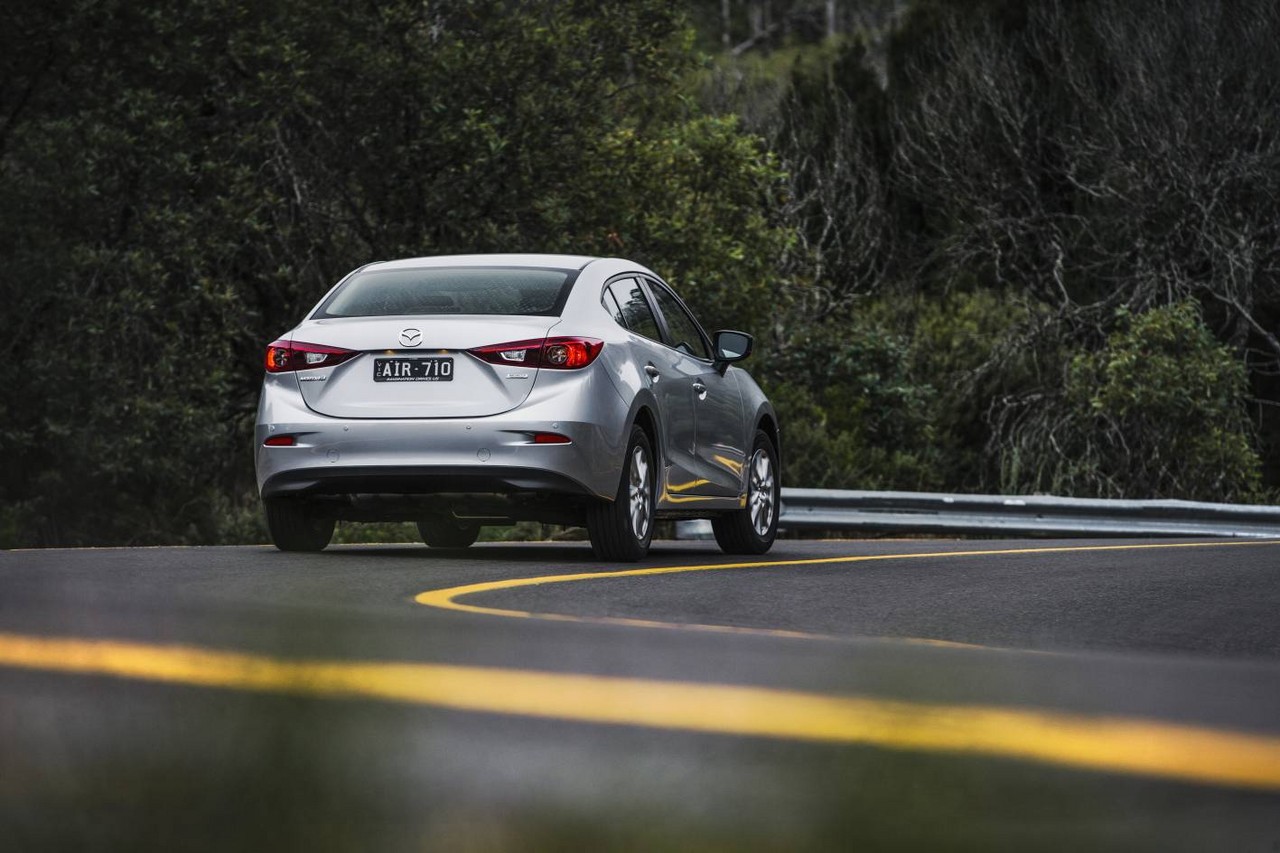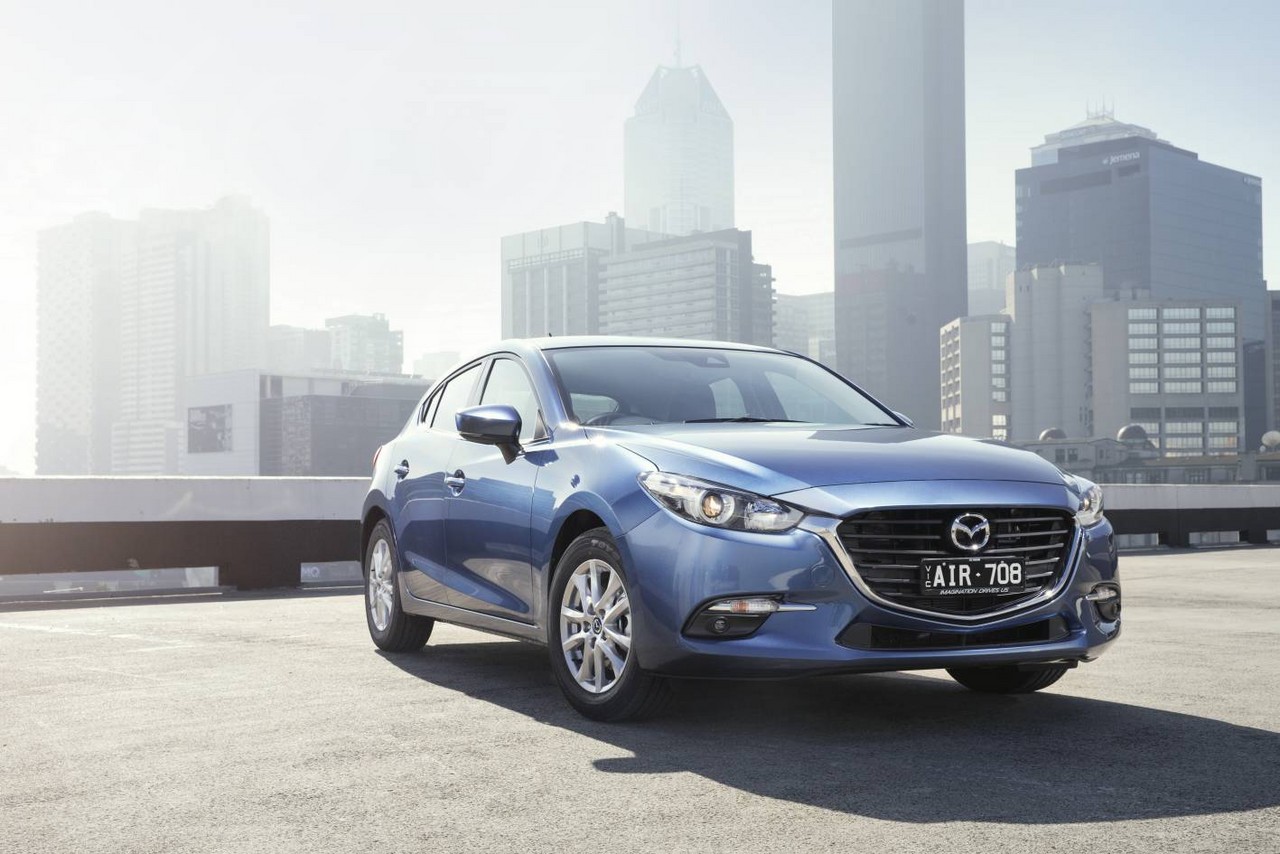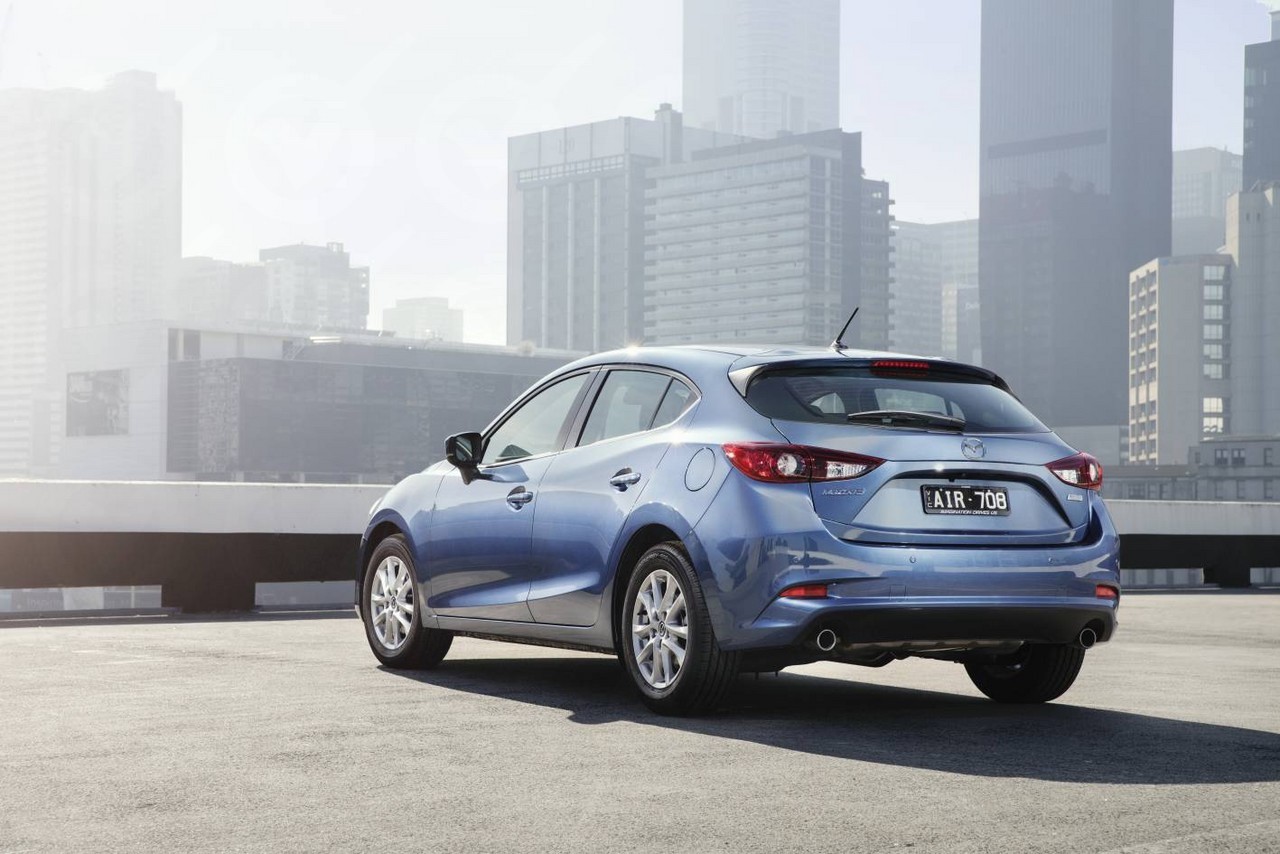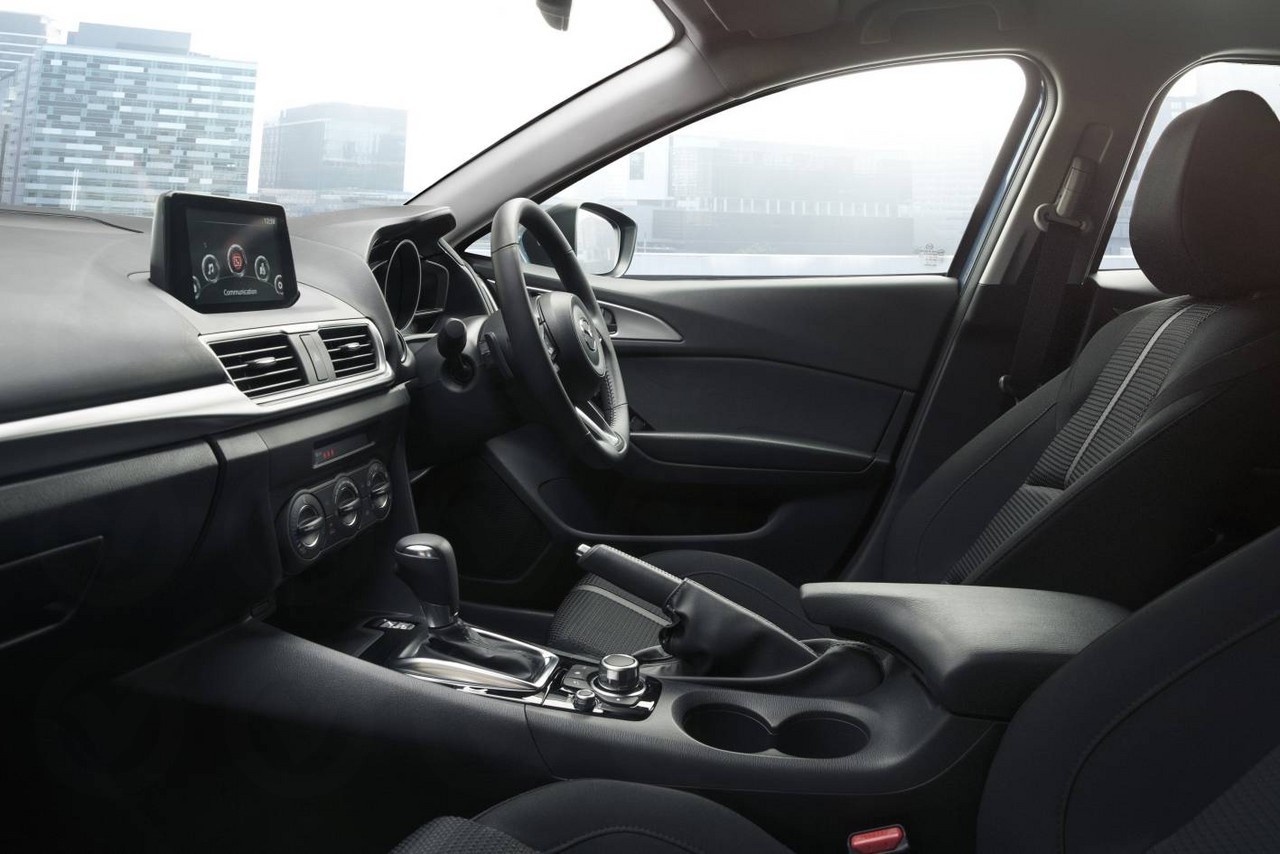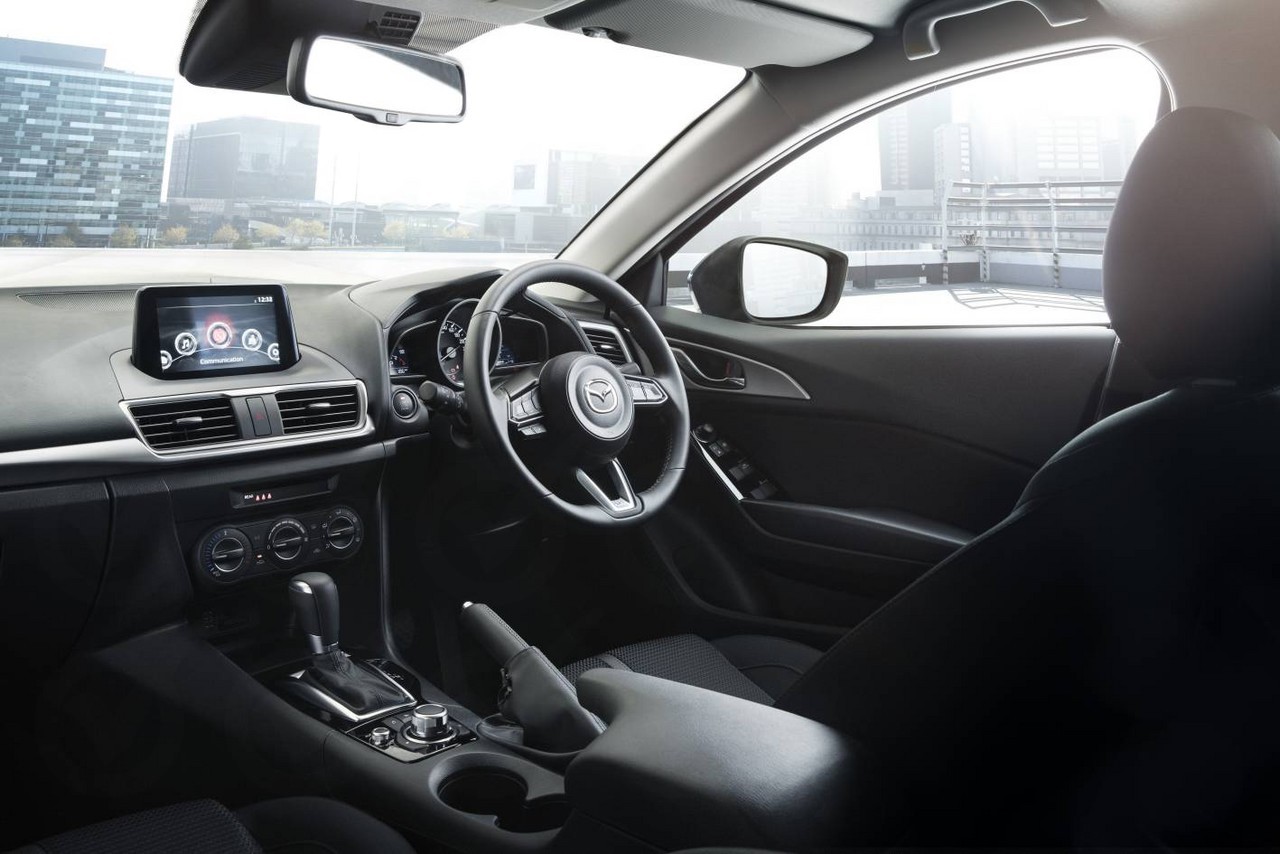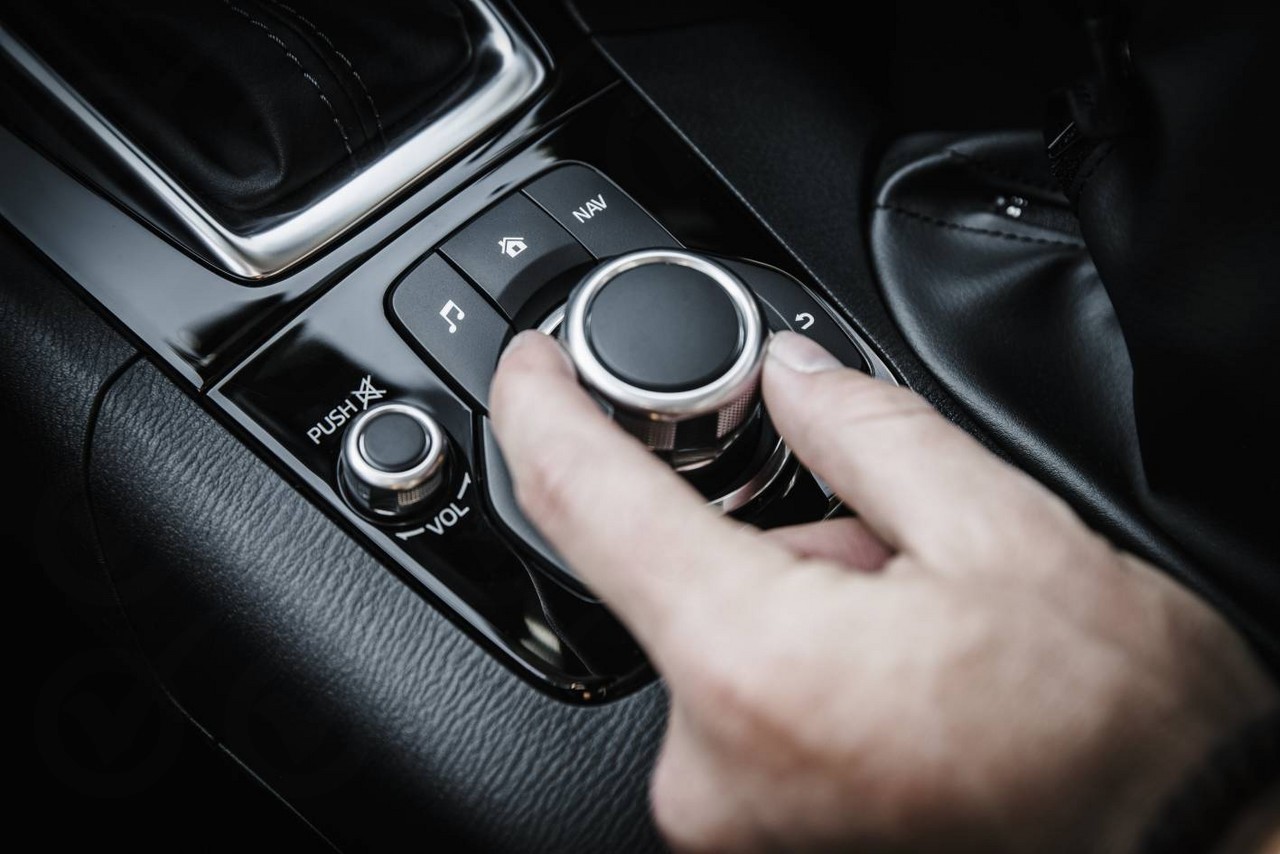
- SP25 variants have responsive drivetrains
- Excellent dynamics
- High quality interior fit and finish
- Accurate steering
- Generally excellent ride/handling balance…
- … though ride is firm on 18-inch wheels
- Interior noise
- For hatch, small cargo bay
Overview
Released in Australia in August 2016, the Mazda BN Mazda3 was available as a sedan or hatch. Manufactured in Hofu, Japan, the front-wheel drive Mazda BN Mazda3 was available with 2.0- and 2.5-litre four-cylinder petrol engines. The Mazda BN Mazda3 range initially consisted of Neo, Maxx, Touring, SP25, SP25 GT and SP25 Astina variants. In February 2018, however, the BN Mazda3 range was revised as the Neo and Maxx variants were replaced by the Neo Sport and Maxx Sport, respectively.
Relative to the Mazda BM Mazda3 , changes for the BN Mazda3 included:
- The fitment of ‘Smart City Brake Support – Forward’ (SCBS-F) as standard;
- The withdrawal of the 2.2-litre SH-VPTR diesel engine from the range;
- The introduction of Mazda’s ‘G-Vectoring Control’. As the steering wheel was turned, GVC would slightly reduce torque – usually 0.01 g or less – to the front wheels to generate a small shift in load to the front axle and improve cornering response;
- The introduction of ‘dynamic dampers’ for the rear suspension trailing arms and suspension cross-member to reduce suspension noise; and,
- Additional sound insulation in the body, ceiling, floor and doors to suppress wind noise at high speed.
| Engine | Variant | Trans. | Peak power | Peak torque |
|---|---|---|---|---|
| 2.0-litre PE-VPS petrol I4 | Neo, Maxx, Touring |
6sp man., 6sp auto |
114 kW at 6000 rpm | 200 Nm at 4000 rpm |
| 2.5-litre PY-VPS petrol I4 | SP25, SP25 GT, SP25 Astina |
6sp man., 6sp auto |
138 kW at 5700 rpm | 250 Nm at 3250 rpm |
PE-VPS and PY-VPS engines
The 2.0-litre PE-VPS ‘SkyActiv-G’ and 2.5-litre PY-VPS ‘SkyActiv-G’ petrol engines had aluminium blocks and cylinder heads, direct fuel injection, double overhead camshafts, four valves per cylinder, variable valve timing for the intake and exhaust valves (Mazda’s ‘dual S-VT’), a balance shaft, a 4-2-1 exhaust system with an extended manifold structure to reduce residual exhaust gas in the combustion chamber and compression ratios of 13:1.
Both engines were available with six-speed manual and automatic transmissions and fitted with Mazda’s ‘i-stop idle-stop’ system which enabled the engine to shut down when the vehicle is stationary to minimise fuel consumption.
Body and dimensions
The Mazda BN Mazda3 hatch was 4460 mm long, 1795 mm wide, 1450 mm tall and had a 2700 mm long wheelbase. While the BN Mazda3 sedan was 120 mm longer at 4580 mm, its other dimensions were the same.
The Mazda3 hatch and sedan had luggage volumes of 308 litres and 408 litres, respectively.
Suspension and steering
The Mazda BN Mazda3 had MacPherson strut front suspension and multi-link rear suspension. Furthermore, the BN Mazda3 had rack-and-pinion steering with electric power assistance; the steering had a ratio of 14.0:1, while the turning circle was 10.6 metres.
Safety equipment
Standard safety equipment for the Mazda BN Mazda3 included dual front airbags, front side airbags, full-length curtain airbags (i.e. for front and rear occupants), ABS, electronic brake force distribution, brake assist, electronic stability control, traction control and front seatbelts with pre-tensioners and load limiters.
As standard, the BN Mazda3 was equipped with Mazda’s ‘Smart City Brake Support – Forward (SCBS-F)’ which operated at speeds between 4 km/h and 80 km/h (4 km/h to 30 km/h for the BM Mazda3 ), and used a near-infrared sensor that was mounted on the windscreen to detect objects up to six metres ahead of the vehicle. When an obstacle was detected and a high risk of collision was determined, the brakes would be applied automatically to avoid or reduce the severity of the collision.
The Mazda3 Maxx, Touring, SP25, SP25 GT and SP25 Astina were further equipped with:
- Blind Spot Monitoring (BSM): used radar sensors to detect vehicles approaching from behind the vehicle. If the driver activated the indicators to change lanes while a vehicle was in the driver’s blind spot, the BSM system would issue a flashing visual indicator in the respective door mirror and sound a buzzer. BSM also included Mazda’s ‘Rear Cross Traffic Alert’ which could detect approaching traffic while the vehicle was reversing;
- Forward Obstruction Warning (FOW): used a milliwave radar to monitor the path ahead and alerted the driver if they were too close to the vehicle ahead and at risk of a collision. FOW operated when the vehicle was travelling at speeds between 15 km/h and 145 km/h; and,
- Smart City Brake Support – Reverse (SCBS-R): for SCBS Reverse, the system operated at speeds between 2 km/h and 8 km/h and used ultrasound sensors in the rear bumper to detect obstacles up to two metres behind the vehicle. When an obstacle was detected and a high risk of collision was determined, the brakes would be applied automatically to avoid or reduce the severity of the collision.
Beyond this, the Mazda3 SP25 GT and SP25 Astina added:
- Traffic Sign Recognition: used the forward-facing camera to detect information on road signs and present this information to the driver via ‘Active Driving Display’ (a head-up display); and,
- Driver Attention Alert: operated at speeds above 65 km/h and monitored driver inputs (such as steering) for signs of fatigue. If detected, a visual warning would be issued. DAA would also issue an alert if the Mazda3 had been driven for two consecutive hours.
The range-topping Mazda3 SP25 Astina was also fitted with:
- Smart Brake Support: operating at speeds between 15 km/h and 145 km/h, SBS used a milliwave radar and forward-facing camera to detect vehicles or obstacles on the road ahead. If a potential collision was assessed, an initial alert would sound (Mazda’s ‘Forward Obstruction Warning’) and the brakes would be pressurised. In its secondary phase, SBS would apply the brakes lightly. If the vehicle could no longer avoid a collision, SBS would increase braking force to minimise the severity of the collision. In the event that the driver applied the brakes, braking force would be maximised;
- Mazda Radar Cruise Control (MRCC): operating at speeds between 30 km/h and 145 km/h, MRCC used a milliwave radar and forward camera to monitor the relative speed of and distance to the vehicle ahead. In accordance with the target speed set by the driver, MRCC adjusted vehicle speed to maintain a safe following distance. MRCC could also brake the vehicle until stationary and, if stationary for less than three seconds, would automatically accelerate when the car ahead started moving; and,
- Lane-keep Assist System (LAS): used a forward-sensing camera to monitor lane markings on the road surface and assisted the driver to stay in their lane by providing steering torque assistance and steering wheel vibration alerts. The driver could choose from ‘Early’ or ‘Late’ settings to adjust the level of assistance and the timing of its operation. In the ‘Early’ setting, for example, the system provided continuous steering assistance to keep the vehicle in the centre of its lane.
Euro NCAP testing
In Euro NCAP testing , the closely-related Mazda BM Mazda3 – fitted with a 2.0-litre petrol engine – received a five star safety rating which included a 93 per cent adult occupant protection rating and an 86 per cent child occupant protection rating. In the offset crash test, occupant protection was generally rated as good although protection of the driver’s chest and lower legs was rated as adequate. Maximum points were awarded in the side impact test though, in the more severe pole test, chest protection was rated as weak.
Based on the Euro NCAP testing, the BM Mazda3 received a five star adult occupant protection rating from ANCAP with a score of 36.4 out of 37.
Brakes
The BN Mazda3 had 295 mm ventilated front brake discs and 265 mm solid rear discs.
Features: Mazda3 Neo
Standard features for the Mazda3 Neo included 16 x 6.5J steel wheels with 205/60 R16 92V tyres, a four speaker sound system with auxiliary input (3.5 mm) and USB input, Bluetooth mobile phone connectivity and audio streaming, black cloth upholstery, air conditioning, cruise control, halogen headlights, rear parking sensors, 60/40 split and folding rear seats, steering wheel audio controls, remote central locking, power mirrors with folding function, power windows, tilt and telescopic steering wheel adjustment, a height adjustable driver’s seat, push-button start, trip computer and an immobiliser.
Features: Mazda3 Maxx
The Mazda3 Maxx was further equipped with 16-inch alloy wheels, a six speaker sound system with digital radio tuner (DAB+), Internet radio integration, a seven-inch colour touch screen with satellite navigation, LED front fog lamps, a rear view camera, an auto-dimming rear-view mirror and a leather-wrapped steering wheel, gearshift knob and parking brake lever. For models with automatic transmissions, steering wheel gearshift paddles were also fitted as standard.
Features: Mazda3 Touring
Relative to the Mazda3 Maxx, the Mazda3 Touring added dual-zone climate control air conditioning, black leather upholstery, dusk-sensing headlights, rain-sensing wipers, auto-folding door mirrors and an electric parking brake.
Features: Mazda3 SP25
Unlike the Mazda3 Touring, the Mazda3 SP25 had black cloth upholstery, but was further equipped with 18 x 7.0J alloy wheels with 215/45 R18 89W tyres and a proximity key (i.e. keyless entry).
Features: Mazda3 SP25 GT
Compared to the Mazda3 SP25, the SP25 GT featured a 231 watt Bose sound system with nine speakers and a digital amplifier, black leather upholstery, a six-way power adjustable driver’s seat, heated front seats, LED headlights, LED daytime running lights and heated mirrors. Unique within the range, the Mazda3 SP25 GT was equipped with Mazda’s ‘Adaptive Front Lighting System’ (AFS) which would predict the vehicle’s direction – based on steering input and vehicle speed – and turn the headlights in that direction.
The Mazda3 SP25 GT and SP25 Astina were also fitted with Mazda’s ‘Active Driving Display’ (ADD), a head-up display which projected speed, navigation directions and other driving information onto a clear panel that was mounted above the instrument cluster.
The Mazda3 SP25 GT and SP25 Astina could be identified by their LED tail-lamps.
Features: Mazda3 SP25 Astina
The range-topping Mazda3 SP25 Astina was distinguished by its ten-way power adjustable driver’s seat, power-operated glass sunroof and ‘Adaptive LED Headlights’ (ALH) that combined ‘Glare-free High Beam’, which controlled the illumination coverage of the high beams, and ‘Wide-range Low Beam’, which expanded the illuminated area.
February 2018: Neo Sport and Maxx Sport
In February 2018, the BN Mazda3 range was revised as the Neo and Maxx variants were replaced by the Neo Sport and Maxx Sport, respectively –
- Relative to the Mazda3 Neo, the Mazda3 Neo Sport gained a six speaker sound system (previously four speakers), the ‘MZD Connect’ infotainment system, a digital radio tuner (DAB+), multi-function command controller and rear view camera; and,
- Relative to the Mazda3 Maxx, the Mazda3 Maxx Sport gained dual-zone climate control air conditioning, rain-sensing wipers, dusk-sensing headlights and an electric parking brake (EPB).
From February 2018, the Mazda3 Touring was equipped with ‘Advanced Keyless Entry’ (i.e. proximity key).
Brochure
